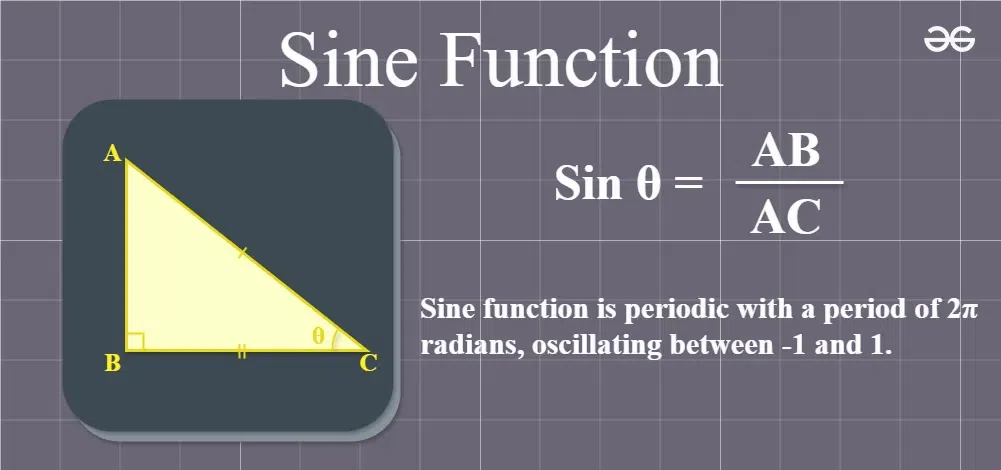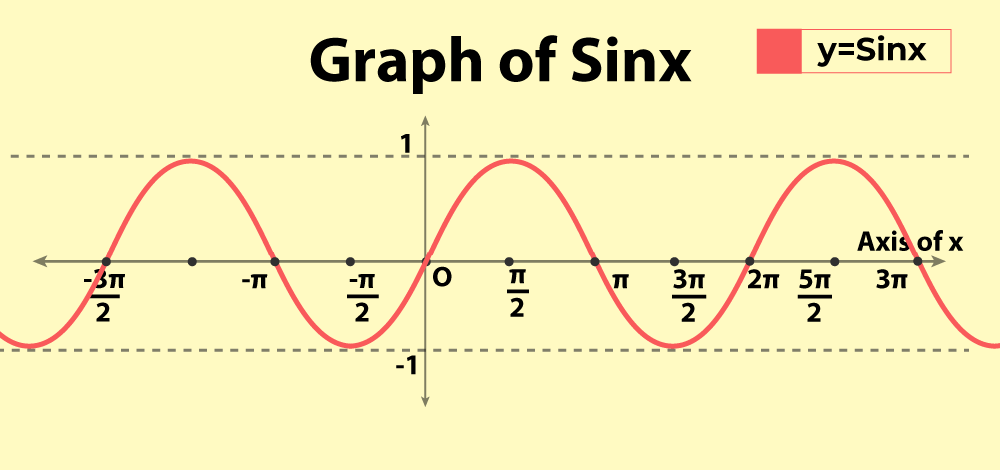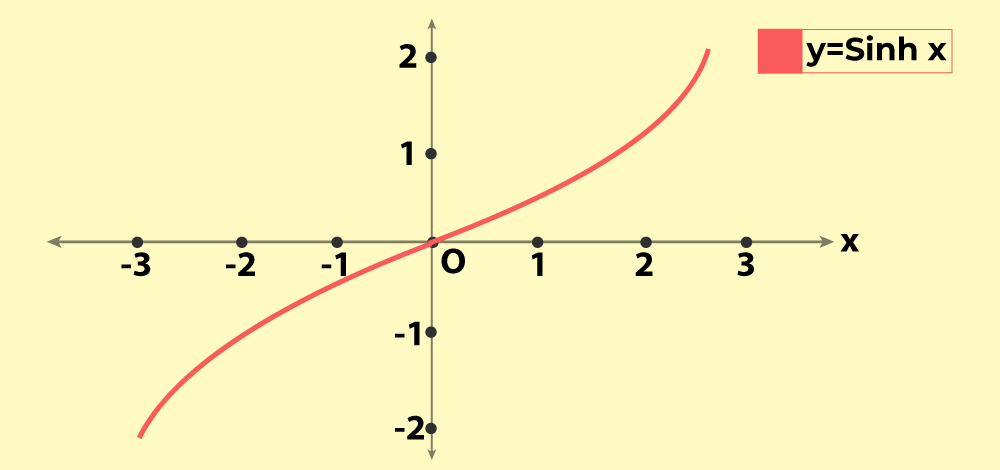
|
|
Sine Function in Trigonometry: Sine Function is one of the six trigonometric ratios which can be defined as the ratio of perpendicular to the hypotenuse in any right angle triangle. As we know, trigonometry is the branch of mathematics that deals with the relationship between the side and angle of any right-angle triangle. In modern-day, trigonometry is used beyond the right-angle triangle, such as in fields like physics, engineering, computer graphics, and astronomy, and even in everyday applications like GPS navigation and architectural design, so is the Sine Function. In this article, we will discuss the definition, formula, and various values of the Sine Function, as well as key properties like domain and range, period, and the graph of the Sine Function. 
Table of Content
What is Sine Function?The sine function is one of the primary trigonometric functions others being tan x, cos x, sec x, cot x, and cosec x. People often confuse the sine function with the sign. It is important to note that these two are two different things one is function [Sine Function] and the other is polarity of any number [Sign] of function. Generally, we define the Sine function for an angle (say x) and denote it as Sin(x) where x can be measured in radians or degrees. Sine Function Definition
Sine Function FormulaIf we suppose a right-angled triangle, then for an angle theta we define sin(θ) as:
Domain and Range Of Sine FunctionThe domain of sine function can be defined between all real numbers as sin x is defined for all x in (-∞, ∞). The range of sin x can be defined as [-1, 1] this can be justified as sin x is a ratio and ratio can never exceed 1. The graph of sine function looks like a wave that oscillates between -1 and 1.
Period of Sine FunctionSince Sine function is a periodic function, we can define the time period after which the values of Sine function begin to repeat. The period of Sine function is 2π and can be written as:
For instance, sin(2π) = 0. If you add 2π to the x, you get sin(2π + 2π), which is sin(4π). Just like sin(2π), sin(4π) = 0. Every time you add or subtract 2π from our x-value, the solution will be the same. Reciprocal Of Sine FunctionThe reciprocal of sine function is called cosecant. We can write it as:
The product of the reciprocal of sine and the sine function is always equal to 1 which means:
From the formula of cosec(x), we can note that cosec(x) will be defined for all values of x except where sin(x) is 0, so we can define domain and range of reciprocal of sin(x) as:
Read More about Reciprocal Identities. Sine Function GraphThe graphical representation of Sine Function:
We can see that Sine is a periodic function which repeats after 2π. The function starts from 0, attains a maximum value of +1 at π/2 until it reaches a the value of 0 at π. It further attains a minima -1 at 3π/2 until it reaches the value 0 at 2π and starts repeating the cycle again. The graph represents an odd function. This means sin(-x)=-sin(x). The periodicity of the graph is 2π. Derivative of Sine FunctionThe derivative of the sine function, denoted as sin (x), with respect to x is the cosine function, denoted as cos(x). In mathematical notation, this relationship is expressed as:
So, if you have a function y = sin (x), then the derivative dy/dx is equal to cos (x). This is a fundamental trigonometric identity in Calculus. Integral of Sine FunctionThe integral of the sine function, denoted as sin (x), with respect to x is the negative cosine function, denoted as – cos (x), plus a constant of integration. In mathematical notation, this relationship is expressed as:
Here, C is the constant of integration, and it represents an arbitrary constant that can take any real value. When you differentiate – cos (x) + C with respect to x, you get sin (x), verifying the relationship. Sine Function Values TableThe value associated with each value of θ is given in the table:
Read More about Trigonometric Table. Other Sine Function ValuesSome other common values of sine functions are:
Properties of Sine FunctionVarious properties of Sin Function are:
Inverse Sine FunctionThe inverse of a trigonometric function gives an inverse trigonometric function. So inverse of sine function is called arcsin. We can represent it mathematically as “sin-1 (x)” or “arcsin x”. We call f-1 an inverse function of f if f(x)=y ⇒ x=f-1(y) So sin x = y ⇒ x = sin-1(y). We know that the inverse of a function exists if and only if it is bijective and the domain and range of a function are interchanged to be the range and domain of its inverse function respectively. Hence,
Inverse Sine Function TableTable for values of inverse of sine function is given below:
Hyperbolic Sine FunctionHyperbolic sine function is represented by sinh. We use euler’s constant(e) to represent the hyberbolic function. Unlike general sine functions which are represented by a circle of unit radius, hyperbolic functions are represented using a hyperbola.
The hyperbolic sine function is a function f: R → R is defined by f(x) = [ex– e-x]/2 . The domain of the sinh(x) function is all real numbers, and the range is (-∞, ∞). Sine Function IdentitiesHere is list of Sine function identities which can be used to ease the calculation:
Read More about Trigonometric Identities. Law of Sine in TrigonometryWe have a very important law in mathematics which is used widely in trigonometry. This law is used to calculate the ratio of length of side and sin of angle opposite to that side in a triangle. It can be written as:
This law can be used to calculate the length of a missing side or an angle. It is also called as Sine Rule, Sine Law or Sine Formula. Sin and Cosine FunctionWe want to know how does sine and cosine function vary at different values of input angle so here we compare the value of sine and cosine function for most values of angle.
Sine Function ExamplesExample 1: Find the value of sin (30°). Solution:
Example 2: Find the value of sin(π/3). Solution:
Example 3: If sin(x) = 0.8, find the value of x in degrees. Solution:
Example 4: If sin(2θ) = 0.6 and θ is in the first quadrant, find the value of θ in radians. Solution:
Example 5: Calculate the value of sin(75°) without calculator. Solution:
Example 6: If sin(α) = 0.5 and cos(β) = 0.8, find sin(α + β). Solution:
Example 7: An electrician is climbing a 40 m long rope, which is tightly stretched and tied from the top of a vertical pole to the ground. Find the height of the pole if the angle made by the rope with the ground level is 60°. Solution:
Practice Problems on Sine Function in TrigonometryProblem 1: In △ABC, right-angled at B, if sin(A)=5/13. If the hypotenuse of the triangle is 13 in, then what is the length of the base of the triangle? Problem 2: Calculate value of sin(135°) using trigonometric identities. Problem 3: Find all values in range [π,5π] where sin(x)=1/2. Problem 4: A boat is attached to an anchor which is 50m long and creates a line that is the hypotenuse of a right triangle. It makes an angle between the hypotenuse and the ocean floor that is 25°. So, what will be the depth of the anchor? Problem 5: Find two values x, y in range [0,π] each such that sin of x+y is 0.96592582628. FAQs on Sine Function in TrigonometryWhat is Sine Function in Trigonometry?
Is Sine Function even or odd?
What is the Period of the Sine Function?
How to Graph Sine Function?
How to Find the Period of Sine Function?
What is Amplitude of Sine Function?
What is the Value of sin 0°?
What is the Value of Sin 30°?
What is the Value of Sin 60°?
What is the Domain of Sine Function?
What is the Range of Sine Function?
|
Reffered: https://www.geeksforgeeks.org
| Geeks Premier League |
Type: | Geek |
Category: | Coding |
Sub Category: | Tutorial |
Uploaded by: | Admin |
Views: | 10 |


